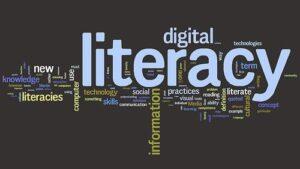
The New Foundation for Success
In today’s rapidly evolving world, Digital Literacy 2.0 has become the new foundation for career success. Technical knowledge alone is no longer enough — employers now look for people who can confidently use digital tools, analyze information, and adapt to new technologies.
In Malaysia, Digital Literacy 2.0 is becoming the foundation for future employability, helping students and workers stay competitive in an AI-driven world. From classrooms to corporate offices, understanding how to use digital tools effectively can make the difference between keeping up and falling behind.
Understanding What Digital Literacy 2.0 Means
Digital Literacy 2.0 goes beyond basic computer skills. It includes knowing how to:
-
Use AI tools for smarter decision-making
-
Stay aware of cybersecurity risks
-
Handle and analyze digital data responsibly
-
Communicate and collaborate effectively online
Developing Digital Literacy 2.0 means understanding how to use, analyze, and protect data responsibly in today’s connected world. These skills are becoming essential for both students and professionals entering the workforce.
Preparing Malaysia for the Digital Shift
Even now, the Malaysian government is taking big steps to prepare the nation for this shift. For example, the Ministry of Science, Technology and Innovation (MOSTI) launched an AI Sandbox program to support up to 900 AI startups by 2026 — a move expected to create thousands of new job opportunities in the tech sector. (MOSTI, 2024)
This means more companies will need young professionals who are comfortable using AI tools, analyzing data, and solving problems digitally. Schools and training centers are focusing on Digital Literacy 2.0 to prepare students for these AI-driven tools and smarter learning environments.
The Future of Technology in Malaysia
By 2026, Malaysia is expected to see bigger use of AI-driven automation, cybersecurity systems, blockchain applications, and cloud-based operations. These technologies won’t just belong to large corporations — even small businesses, schools, and childcare centers will start using them to manage data, handle communication, and improve daily operations.
Imagine teachers using AI to design personalized lessons or entrepreneurs relying on data analytics to understand their customers better (IndustryARC, 2024). As these changes unfold, Digital Literacy 2.0 will be the key to keeping up with technology and innovation.
Building the Next-Gen Workforce
Digital Literacy 2.0 isn’t just about learning new apps or systems — it’s about changing the way we think. It’s about being open to innovation, asking questions, and understanding how technology impacts our lives. Whether you’re a student, an employee, or someone just curious about the digital world, being adaptable will help you thrive in this new era.
So, as we move toward 2026 and beyond, the message is simple: don’t be afraid of technology — explore it. Learn how it works, play around with it, and see how it can make your life better. The future belongs to those who are ready to grow with it.
Companies that adopt Digital Literacy 2.0 standards will find it easier to innovate and stay ahead in Malaysia’s fast-changing economy. Students who can adapt to digital tools will also find themselves more confident in facing future challenges.
For those still learning, this is the perfect time to explore online resources and micro-courses. Platforms like Coursera, FutureLearn, Malaysia’s Digital Skills Training Directory, and FAME Meta also provide accessible AI learning opportunities — from beginner-friendly introductions to advanced upskilling programs designed to enhance digital Literacy 2.0 skills.
Conclusion
Digital Literacy 2.0 isn’t just a trend — it’s a career survival skill for 2025 and beyond. As Malaysia moves toward a more digital future, those who can adapt, learn, and innovate will lead the way. Whether you’re a student, educator, or employee, investing in your Digital Literacy 2.0 today means building the confidence, creativity, and capability to thrive in tomorrow’s workforce.




